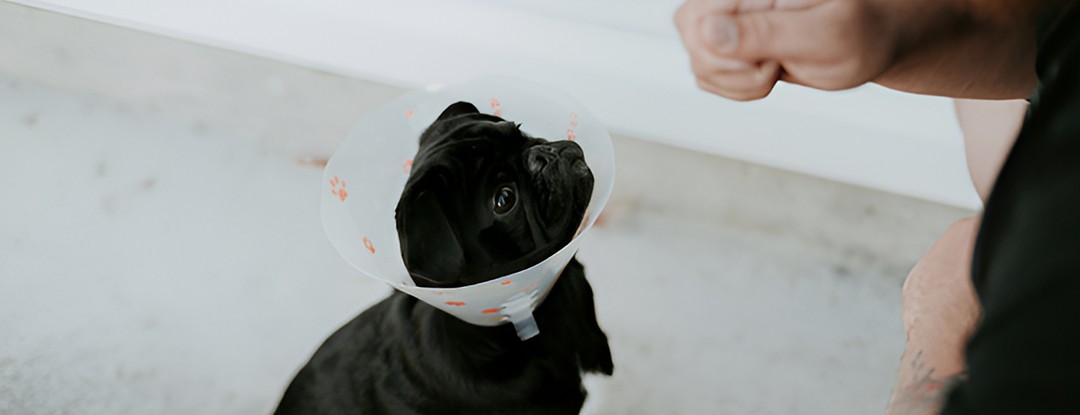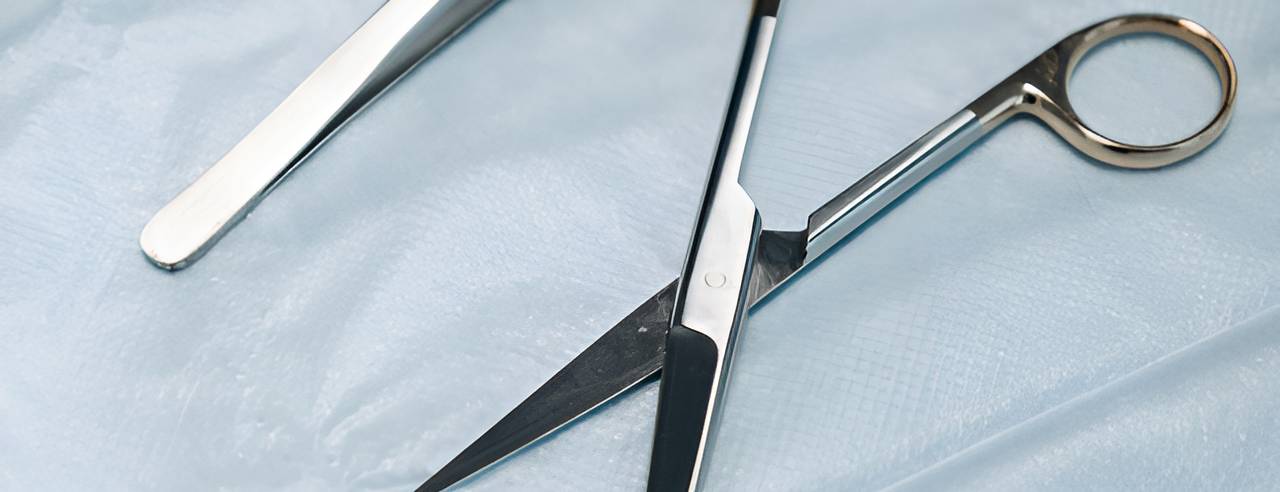
Proper Veterinary Tools Improve the Outcome of Animal Surgery
In the perspective of animal surgery, it is really possible to identify the area by accuracy, gentleness, and dexterity in a way that tools used would dictate success of the procedure and welfare of the animals.
From spaying or neutering, which is one of the common surgeries to more complex works on exotic animals, it is tools used. Some of the very basic tools that are fundamental in making it a safe and effective intervention include spay kits, clamps, and surgical scissors.
This article then addresses critical ways through which the tools and their impact upon outcomes determine surgical outcomes and their continuing standard of care from advancement of veterinary instrumentation.
Spay kits and their role to promote animal Health
The spay/neuter surgery is the cornerstone in controlling the population as well as ensuring an improved health outcome in individual animals. Careful design and production have enabled tools in a spay kit to answer specific demands made by such surgeries.
There must be complementary kits at every stage of procedure: Traditionally, spay kit comes with a standard complement of scalpels, surgical forceps, needle holders, scissors, and retractors.
These are pretty skilled instruments to manage the tissue. They can deliver a sharp incision, snug sutures, and even tissue handling. To speak of fact, most of spay kits are designed to keep as few unnecessary extra steps to ensure the veterinarian would get done in the shortest possible and smoothest time.
Efficiency of Surgery: A well-prepared spay kit allows a veterinarian to do surgery much faster and with more efficiency. This can keep the animal under anesthesia for less time. Less surgical time can also limit the dangers of hypothermia and other complications brought by anesthetic use. Not to mention, it reduces the overall stress the animal undergoes, which in turn helps the animal recover better and more easily.
Advantages in Recovery: With better and precise instruments, the traumatized tissues are minimized; this results in quicker recovery and less pain to the animal. This is very significant when pets are being sent home and stray animals recovering in shelters. Animals with reduced tissue trauma during surgery tend not to have complications like infections and prolonged bleeding; they go back to their routines immediately.
Investment in durable, quality spay kits will ensure veterinary clinics have consistent output that contributes more to the welfare of animals they treat. In addition, it enables larger volumes of spay and neuter surgeries, which is also very beneficial in shelters, whose primary interest is the volume of pets to reduce.

Clamps: Haemostasis and Tissue Stabilization
Clamps are the most versatile instruments in veterinary surgery. They will ensure that whatever is done will be in hand; thus, the patient is safe and stable.
Hemostatic clamps: Hemostatic clamps form a group of clamps. Within them, there are Mosquito, Crile, and Kelly clamps. All these clamp blood vessels to a very tight fit such that surgeons can halt any bleeding within a very short time and quite effectively. This is quite crucial in surgeries where blood loss is at a risky high.
Hemostatic clamps are used not only to check blood flow but also to withdraw tissues that could otherwise obscure the surgical site, giving the surgeon clearer visibility and easier access.
Tissue Stabilization: Clamps apply stabilization onto tissues by holding the former steady to maintain accuracy under highly delicate procedures. As, intestinal or vascular clamps have to clasp the tissue carefully without causing damage of tissues hence their applications emerge to be the requirements in gastro intestinal or cardiovascular surgeries.
At certain conditions, the clamps may be of an application where by necessary pulling away of the tissue along the structural elements has prevented to accidentally tear up against these.
Adaptability Across Species: Veterinary surgeons deal with a lot of animals; from a very small pet like a rabbit and a bird to very huge livestock like cattle and horses. Thus, clamps are available in each size and style according to every species, just for the sake of accuracy and security while performing the case.
For example, a clamp for a small animal can be more fragile so that it will not cause too much injury. In some cases, larger animal surgeries require stronger clamps. At such times, the tissues may be pretty strong compared to human cases.
Durability and Performance: Modern clamps are made using corrosion-resistant materials such as stainless steel or titanium to ensure they can withstand repeated sterilization and heavy usage.
Therefore, it is certain that consistent performance is provided during those critical moments of surgery. Most clamps made today are ergonomically designed so that it reduces hand strain. In this manner, the veterinarian could apply pressure steadily without experiencing discomfort.
Clamps in veterinary procedures are very essential in controlling blood flow or stabilization of tissues. Prevention of flooding is important because it may be extremely crucial in high-risk surgeries that may lead to complications because of the small amounts of blood loss.

Surgical Scissors: Precision with Each Cut
Veterinary surgical scissors are commonly used in the operating theatre. This particular scissor boasts precision and versatility in the operation room by using a number of surgical procedures such as cutting up tissues, sutures, or any other type of material.
Variations:
Mayo Scissors- Mayo scissors is used when needed to be snipped with the thick tissues like muscle or even fascia. Though it is firm in structure because of its thickness, it does have sharp snip to make it precise.
Metzenbaum Scissors- to be used for fine dissection without damaging the tissues in such areas. It is meant to be used in the advanced stages of surgery, such as in the heart or lungs or very delicate parts.
Suture Scissors- cuts the suture with less force but effective and without hurting the surrounding tissue. The scissors can nip easily into the suture material without putting pressure on the tissue to be sutured.
It supports healing through clean sharp cuts by sharp surgical scissors that cause minimum damage to tissue, heal faster, experience less pain, and a decreased risk of infection.
The cleaner the cut, the lesser the amount of damage that the surrounding tissues receive; hence, it impacts recovery times after surgery immensely. In delicate tissue areas, it minimizes trauma that would otherwise lead to complications in adhesions or scarring.
Reusing ensures surgical scissors last long. They are made in a way that keeps them for more than one session in and out of sterilizing tanks.
Their quality material that keeps them reliable for periods also eliminates the need for constant replacements. Sharp-edged scissor is a versatile addition to any veterinary practice that supports cutting of various tissues.
This diversity and accuracy of surgical scissors make it an indispensable tool for each veterinary surgeon. Its versatility enables veterinarians to choose the best instrument for each surgery, thus optimizing the efficiency and outcome of each procedure.

Beyond Basics: Specialized Veterinary Tools
While spay kits, clamps, and scissors are the bedrock of veterinary surgery, far too often veterinarians require specialized instruments for more specific procedures.
Laparoscopic Instruments: As more and more minimally invasive surgeries are being practiced, more and more instruments have become necessary. Laparoscopic trocars, forceps, cameras, and so on have become very necessary.
Now, a surgeon can make minimal incisions that not only reduce post-op discomfort and pain but also speedy recovery from procedures. The diagnostics and treatment performed through laparoscopy also improve upon the visual inspections of internal organs.
Orthopedic Instruments: Any fracture repair or joint surgery requires specific instruments like a bone saw, drills, plates, and screws, anatomically and functionally designed for an animal to ensure good outcome.
Modern orthopedic instruments have evolved to provide accuracy, such as screw placement guides and advanced materials for faster healing and lower rates of complications.
Electrosurgical Units: They are high frequency electric currents which simultaneously are used to cut and coagulate tissues in surgeries. They minimize the amount of bleeding in the surgical procedure and the surgical time.
They have immense value in surgeries that are carried out in essential organs or sensitive parts of an animal where the rate of bleeding has to be maintained under strict control. It would therefore lead to a better-controlled incision with minimal blood loss and thus resulting in a faster procedure.
Microsurgery instruments are required for very minute structures in ophthalmic and neurological surgeries. An ultra-fine instrument is thus made to have the effect of absolute precision like fine needle holders, microscissors, and delicate forceps.
These types of instruments are prepared only for some kind of specialized surgeries such as performing surgery on cataracts or in the spinal cord for a mistake made could hurt severely.
Exotic animal specific tools: These specific animals being pets and/or wild life are provided with the application of specialized anatomy. Retraction and clamps, particularly used by reptiles or the delicacy scissors for birds is the provision that allows proper care in this respect.
As species vary hugely compared to the commonly utilized domesticated types, veterinarians should apply suitable methods and tools during surgical operations so as to achieve safest and most effective operations.

Importance of Tool Quality in Veterinary Care
Veterinary tools are not just tools, but the best expression of care and professionalism on behalf of the clinic. Good quality tools have a direct impact on surgeries, the recovery of patients, and the reputation of the practice.
Safety First: Safe tools prevent surgical mistakes such as accidental cuts or wrongly stitched wounds. Therefore, more careful procedures on animals using good quality tools will minimize chances of complications both post-operatively and further up during treatment.
Less tissue damage, less pain, quick recovery, and more comfortable post-operative animal life means that the better the instrument used. With sharp, exact instruments, less force has to be used, which lowers the stress levels of the animal in the whole process.
Clinics are designed to be more efficient at working if the tools are, performing and providing efficiencies to the veterinarians who see more patients but never at the sacrifice of after-care. A good system here improves a workflow over larger numbers of patients toward a better outcome.
Building Client Trust: Any owner of pet desires the best for his or her animal. Innovative, good-quality tools reflect care and excellence, which further increase trust and loyalty between a vet and the client.
Clients will always return to practice again for future treatments. There is a huge likelihood of referring the clinic for others since they see a clinic placing the best in their pet.
Conclusion:
The veterinary surgery tools consist of spay kits, clamps, and surgical scissors. All these make way for accuracy, efficancy, and safety in the surgical procedures that successfully take place and influence the recovery process as well as the long term health. And so the evolutionary process continues with scientific discoveries and needs of the different other species, providing veterinarians the confidence in even the toughest cases to work on.
More than a professional need for quality reliable instruments, it expresses the depth of commitment on the part of veterinarians toward their patients. Given the best instruments that could be had, further improvement in outcome and reduction in suffering would be brought while doing this to maintain the highest care, hence ushering better times for all animals in general.

Comments (0)